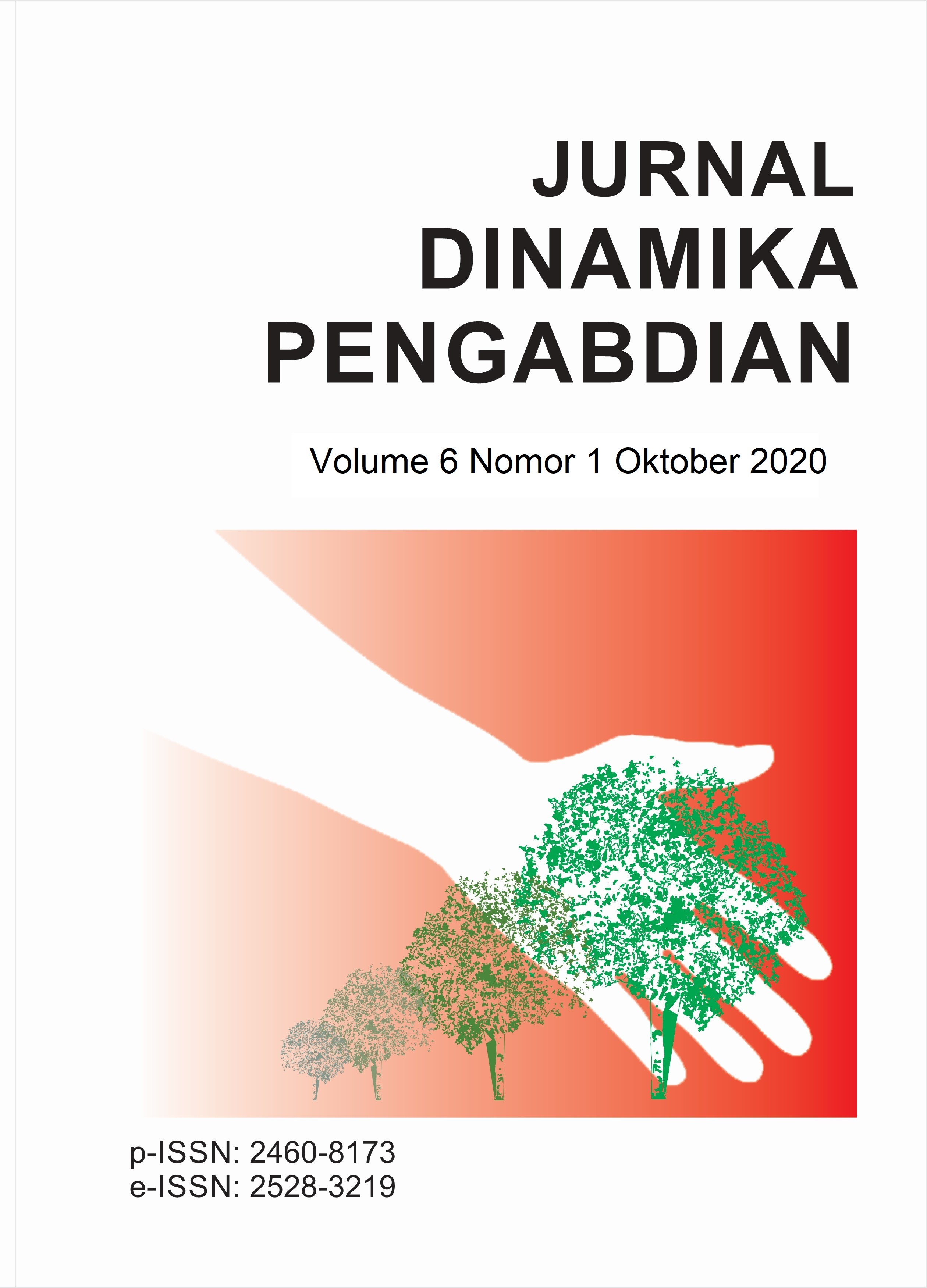PENERAPAN PAKET TEKNOLOGI RAMAH LINGKUNGAN PADA BUDIDAYA SAYURAN BUAH GUNA MENGANTISIPASI DAMPAK ANOMALI IKLIM
DOI:
https://doi.org/10.20956/jdp.v6i1.11571Abstract
Climate anomaly is very influential for agriculture in our country. The patterns and methods of farming that have been adopted by farmers must be adapted to anticipate shifts in erratic seasons. Horticulture is a food that is quite essential for humans and has a high economic value if it is managed intensively. Characteristics of vegetables that are easily damaged and rotten cause the price to be very volatile so that it affects the farmer’s income. Uncertain rainy season affects the availability in market because vegetables are generally cultivated conventionally in open fields. A technology approach and smart agribusiness management are needed to reduce the impact of environmental anomalies so that they do not affect the quantity and quality of agricultural products. To reduce the impact of environmental anomalies, the application of synergistic and environmentally friendly technologies on fruit vegetables using a drip hydroponic system and mulch in the cultivation of eggplant in dry land, circulated NFT hydroponics in cultivation of cucumber and bitter melon plants. It also carried out the manufacture and use of liquid organic fertilizer to stimulate the growth and production of fruit vegetables and biopesticides to avoid pests and plant diseases. The results showed that eggplant cultivation planted in open land with drip irrigation resulted in 3.26 fruit / tree with a total production of 130,400 fruits/ha. If the price is IDR 2,000/fruit, then the turnover earned is IDR 260,800,000/ha. Cultivation of cucumber through hydroponic NFT yields 18.83 fruit/tree with a total production of 301,280 fruit/ha. If the price is IDR 1,000/fruit, then the turnover earned is IDR 300,426,000/ha. Cultivation of bitter melon through hydroponic NFT yields 23.76 fruits/tree with a total production of 308,880 fruits/ha. If the price is IDR 1,000/piece, then the turnover earned is IDR 308,880,000/ha.
Keywords: Hydroponics, organic fertilizers, biopesticide, fruit vegetables.
ABSTRAK
Anomali iklim sangat berdampak bagi dunia pertanian di negara kita. Pola dan cara bercocok tanam yang selama ini telah dianut oleh petani harus diadaptasikan untuk mengantisipasi pergeseran musim yang tidak menentu. Produk hortikultura merupakan bahan pangan yang cukup esensial bagi manusia dan mempunyai nilai ekonomi yang cukup tinggi jika dikelola secara intensif. Karakteristik sayuran yang mudah rusak dan busuk menyebabkan harganya sangat fluktuatif sehingga berpengaruh pada pendapatan petani. Musim hujan yang tidak menentu berpengaruh terhadap ketersediaan di pasar karena sayuran pada umumnya dibudidayakan secara konvesional di lahan terbuka. Untuk mengurangi dampak anomali lingkungan, penerapan teknologi bersinergi dan ramah lingkungan pada sayuran buah dengan menggunakan sistem hidroponik tetes dan mulsa pada budidaya tanaman terung dilahan terbuka, hidroponik NFT tersirkulasi pada tanaman mentimun dan pare. Selain itu juga dilakukan pembuatan dan pemanfaatan pupuk organik cair untuk merangsang pertumbuhan dan produksi sayuran buah dan biopestisida untuk menghindari serangan hama dan penyakit tanaman. Hasil kegiatan menunjukan bahwa budidaya terung yang ditanam di lahan terbuka dengan pengairan tetes diperoleh hasil 3.26 buah/pohon dengan produksi total 130,400 buah/ha. Jika harga Rp. 2,000/buah, maka omzet yang diperoleh sebesar Rp. 260,800,000/ha. Budidaya tanaman terung melalui hidroponik NFT diperoleh hasil 18.83 buah/pohon dengan produksi total 301,280 buah/ha. Jika harga Rp. 1,000/buah, maka omzet yang diperoleh sebesar Rp. 300,426,000/ha. Budidaya tanaman pare melalui hidroponik NFT diperoleh hasil 23.76 buah/pohon dengan produksi total 308,880 buah/ha. Jika harga Rp. 1,000/buah, maka omzet yang diperoleh sebesar Rp. 308,880,000/ha.
Kata kunci: Hidroponik, pupuk organik, biopestisida, sayuran buah.
References
Badan Pusat Statistik, 2012. Statistik Industri Manufaktur. BPS, Jakarta, Indonesia.
Irawan B., Ariani M., Pasandaran E., 2019. Mempersiapkan Sumber Daya Pertanian Masa Depan dalam Manajemen Sumber Daya Alam dan Produksi MendukungPertanian Modern. Penerbit ITB Press, Bogor, Indonesia.
Tando E., 2019. Pemanfaatan Teknologi Greenhouse dan Hidroponik Sebagai Solusi Menghadapi Perubahan Iklim Dalam Budidaya Tanaman Hortikultura. Buana Sains. 19(1): 91-102.
Wiraatmaja I.W., 2017. Suhu, Energi Matahari, dan Air Dalam Hubungan Dengan Tanaman. Program Studi Agroteknologi, Fakultas Pertanian, Universitas Udayana, Denpasar.
Haryanti, S., 2010. Pengaruh Naungan yang Berbeda terhadap Jumlah Stomata dan Ukuran Porus Stomata Daun Zephyranthesrosea Lindl. Buletin Anatomi dan Fisiologi. 18(1): 41-48.
Downloads
Published
How to Cite
Issue
Section
License
Copyright (c) 2020 Jurnal Dinamika Pengabdian (JDP)

This work is licensed under a Creative Commons Attribution 4.0 International License.
Penulis diwajibkan untuk menandatangani "Surat Perjanjian Hak Cipta" atau Copyright Agreement untuk penyerahan ijin kepada pihak jurnal untuk menerbitkan tulisannya.
Authors are required to sign a "Copyright Agreement" to submit permission to the journal to publish their writings.







